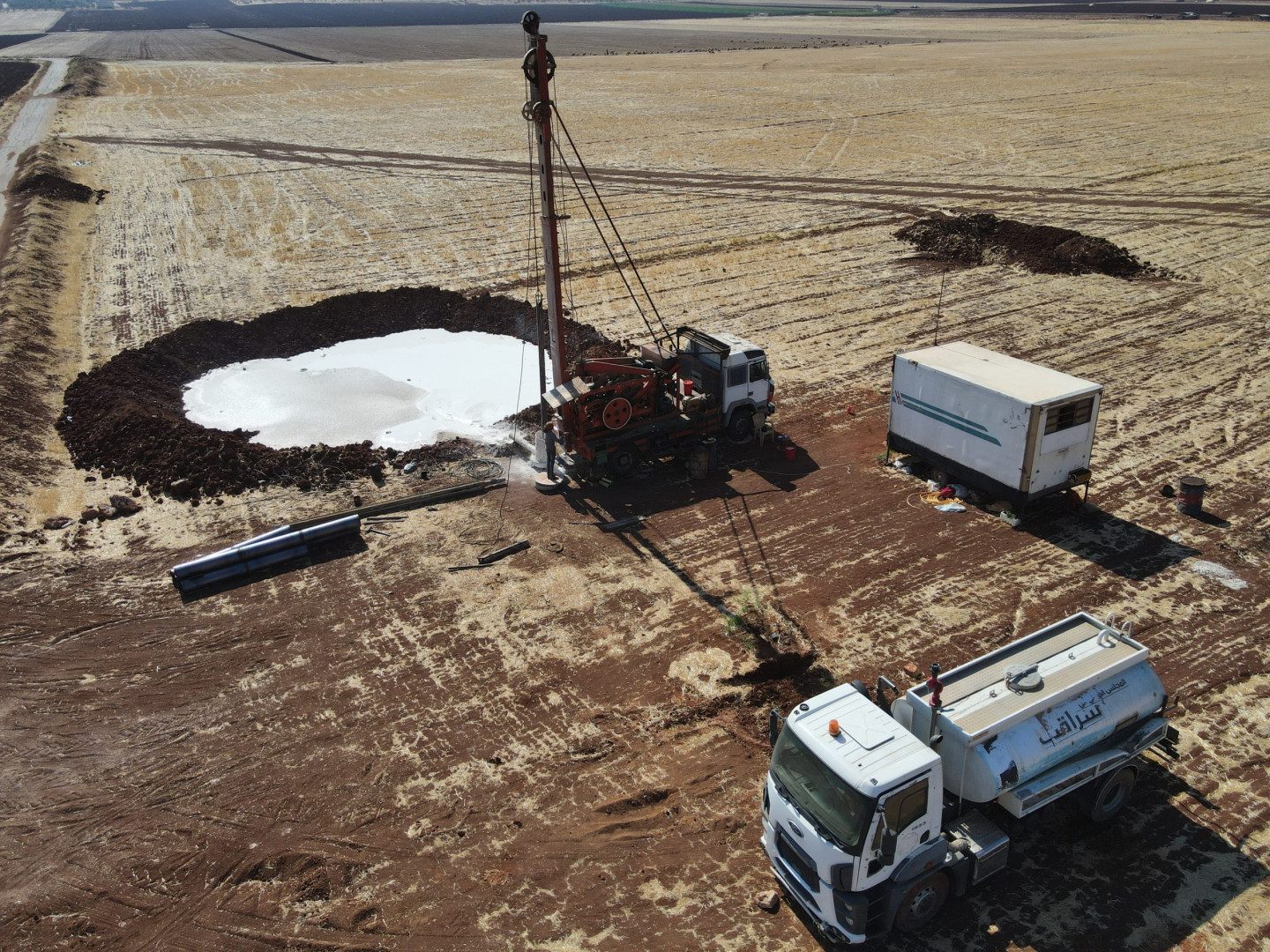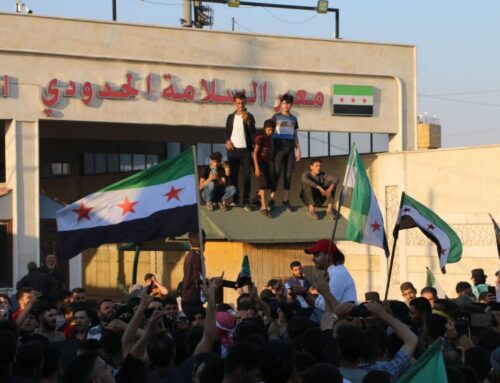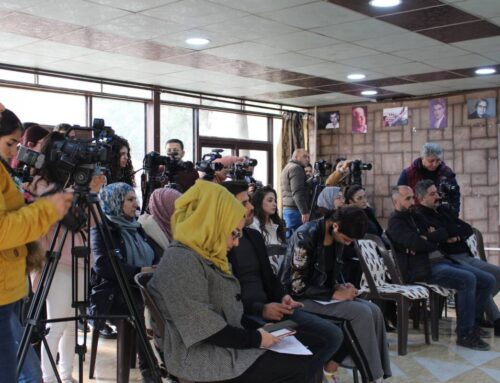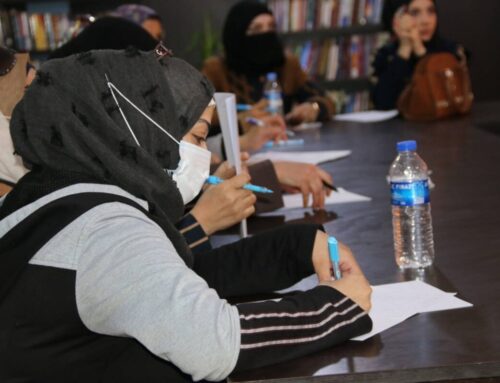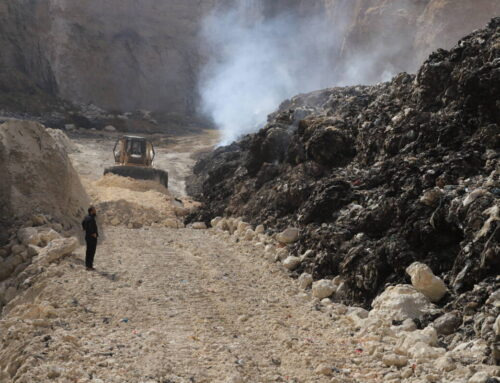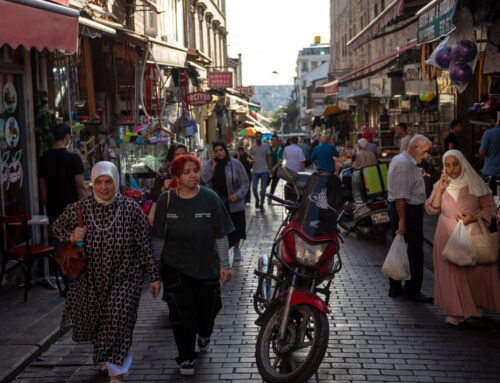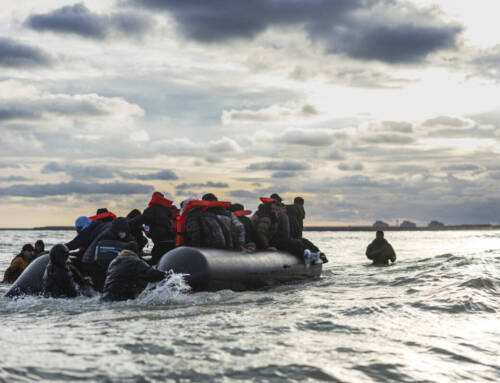Unsustainable water pumping in Syria’s northwest spells trouble for coming generations
Amid a historic drought, dozens of new wells are being drilled across northwest Syria to meet a rising demand for water. But the overpumped water table is dropping, while farmers struggle with skyrocketing costs and decreasing water quality.
31 August 2022
IDLIB, ERBIL — Abu Bakr Shehadeh draws from his neighbor’s well to water his small one-dunum vegetable plot (0.10 hectares) in the western countryside of Syria’s Idlib province. When his neighbor drilled the well two years ago, water was reachable 200 meters below ground. But the water level has been dropping ever since, Shehadeh said, increasing his irrigation costs. Today, he spends approximately 100 Turkish lira ($5.50) in fuel each week to pump out 50 cubic meters (50,000 liters) for his family garden.
“Increasing the number of wells in our area has driven up the cost of extracting water,” Shehadeh lamented. “As the water [level] falls deeper, we have to pump more, and the costs increase.”
Like Shedadeh, many of the 4 million people in northwestern Syria rely on boreholes and wells to access water. They became increasingly important in the region since the start of the war, which led to a mass exodus of hundreds of thousands of Syrians to the last opposition-held areas of the country. As the collapsing water network failed to answer growing needs, many communities turned to private wells for a stable water supply.
But in most areas of the northwest today, groundwater resources are being depleted at an unsustainable rate, and the water itself is increasingly brackish and hard to reach. With no easy solutions, and future droughts likely, the region faces a protracted and worsening water crisis.
Looking for water
Syria’s water crisis did not appear overnight: Starting in the 1980s, the number of wells drilled across the country skyrocketed as state authorities encouraged farmers to adopt irrigation techniques and replace rain-fed crops, such as wheat, with irrigated cash crops, such as cotton.
Across the country, the number of wells rose from 53,000 in 1988 to 124,000 in 1994, while fuel subsidies enabled farmers to irrigate their land at a low cost. But by the early 2000s, groundwater management was a growing source of concern, as reports of dropping water levels and dried up wells began to emerge.
But war upended plans to regulate water more sustainably. On the contrary, water grew increasingly difficult to access and manage. In 2021, the International Committee of the Red Cross (ICRC) estimated that Syrians had access to 40 percent less water than in 2011, prior to the uprising and ensuing war. Multiple factors led to this drastic reduction, including a massive influx of displaced people in the northwest, conflict-related pollution, illegal targeting of water facilities and the emigration of qualified staff and engineers needed to maintain the water network.
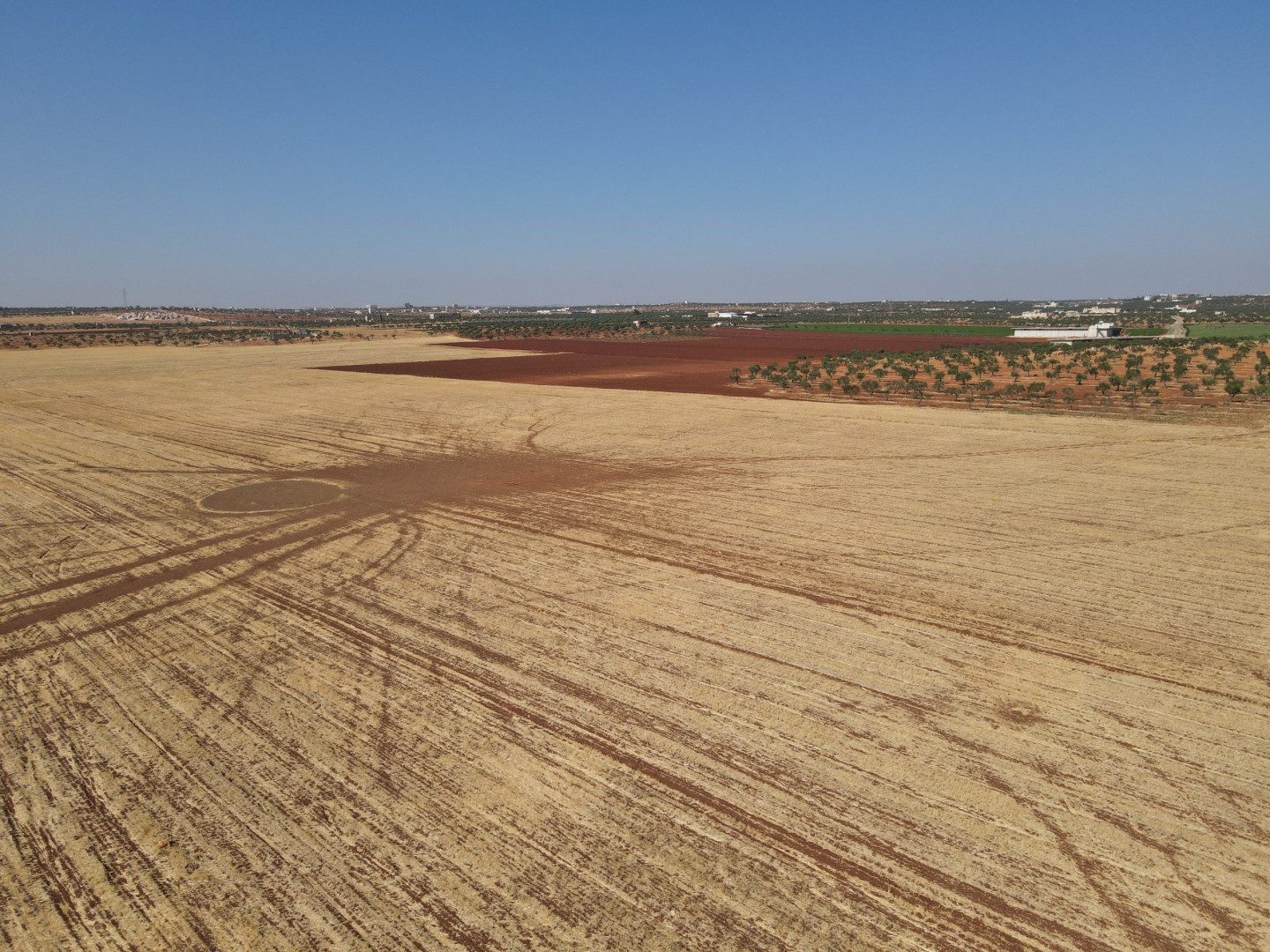
Wheat fields and orchards near the northern Idlib province town of Maarat Misreen. These agricultural lands will soon be irrigated with water from a new borehole, 18/08/2022 (Abd Almajed Alkarh/Syria Direct)
While 92 percent of Syrians living in rural areas had reliable access to safe water before 2010, according to the ICRC, many people now face huge challenges accessing it. In displacement camps, residents often buy water from street vendors and private water tankers, without any guarantees about its quality.
Growing demand for water pushed Syrians to tap further into underground reserves, which were already heavily exploited and provided more than half of the country’s irrigation water before the war. The agricultural sector, which in 2019 consumed between 86 and 89 percent of annual water resources, drove this trend as the conflict-related destruction of irrigation canals and water pumps made farmers ever more reliant on nearby wells.
Chaotic well-drilling
An estimated 4.5 million people live in northwestern Syria, including almost 3 million internally displaced people—making it the most densely populated part of the country.
Residents have drilled hundreds of new wells in recent years to supply farmers and remote displacement camps, while a lack of governmental oversight has allowed for chaotic growth in the private water market. As of August 2022, around 1,000 boreholes in Idlib province were registered with the Water Resources Department of the Salvation Government, the de facto local government established by Hayat Tahrir-al-Sham (HTS), the Islamist group that controls much of the province.
But this figure is likely far below the actual number of boreholes in the province, as many are drilled illegally and are not registered with local authorities.“There are no accurate statistics on the number of wells drilled illegally, due to a lack of capacity and the lack of staff in our administration,” Ibrahim al-Yassin, the head of the Water Resources Department, told Syria Direct. “We have, however, registered around 750 wells that were drilled in the past without a license.”
The cost of drilling a well in northwestern Syria ranges between 1,000 and 10,000 USD ($), depending on its depth. “Any well drilled deeper than 500 meters will cost more than $10,000,” Muhammad Hussein Yassin, who has been drilling wells in the region for 35 years, told Syria Direct. “As for wells around 250 to 300 meters deep, the cost will be about $2,000.”
According to Yassin, “shallow” or “surface” wells, which are typically 70 to 120 meters deep, only reach water just below the surface, which has not permeated through deeper rock layers. “Because of their shallow depth, these wells can run out during a drought,” Yassin said, since they are replenished by rainwater as it seeps into the first layers of the soil.
By contrast, “deep” wells reach down several hundred meters below the surface, piercing into pockets of water trapped between relatively impermeable layers of rock. These wells do not depend on how much water is collected at the surface, and are also less likely to be contaminated by pollution because they are protected by multiple layers of rock. However, they can take thousands or even millions of years to refill—once the water inside is used up, they run dry.
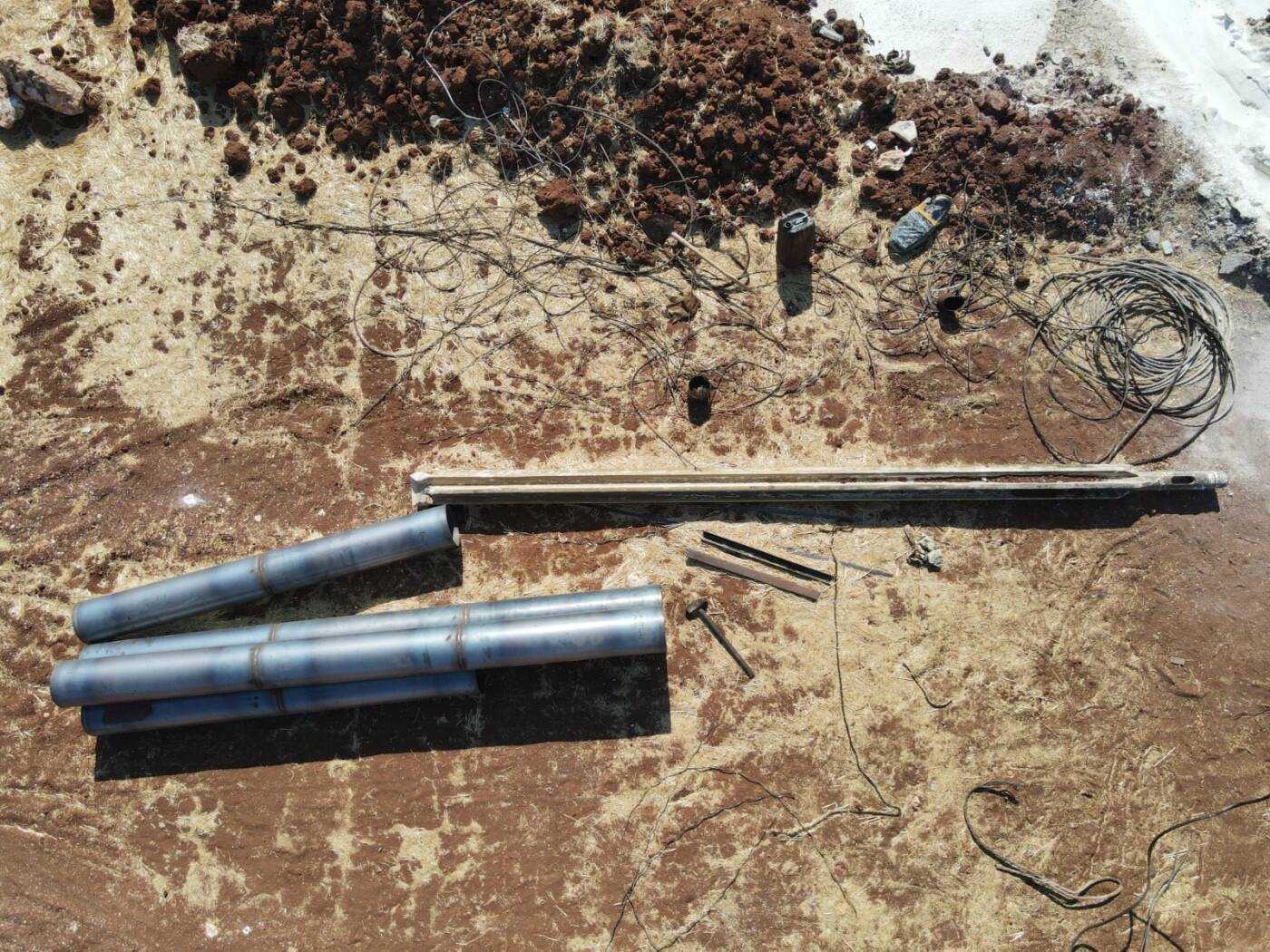
An aerial view of the materials used to drill a new borehole, near the city of Maarat Misreen in the northern Idlib province, 18/08/2022 (Abd Almajed Alkarh/Syria Direct)
Despite the significant investment required to dig a well, for those who can afford the initial costs, it is cheaper over the long term than purchasing trucked water. Yassin faces no shortage of demand: Every year, his company, which owns three excavators, drills two or three wells deeper than 500m and around 10 more shallow wells that do not exceed 300m.
But the cost of digging, equipping and using a well (around $20,000) is out of reach for many. To bypass the rising price of fuel needed to pump water, some farmers use solar panels. Still, “most people can’t afford it, even if they work day and night,” Shehadeh told Syria Direct.
Like Shehadeh, Mohammed al-Shami (a pseudonym), a displaced farmer in the Idlib city area, cannot afford the cost of drilling his own well and relies on his neighbor’s to irrigate his own 1o-dunum (one-hectare) plot. But he still has to pay for the fuel needed to pump out water.
“To get one adan of water, I need one barrel of diesel, which costs around $140,” al-Shami told Syria Direct. The Arabic word adan refers to a traditional way to share irrigation water between farmers, in which irrigation is divided by periods of watering time rather than by the amount of water used.
Brackish water
In addition to the growing cost of extracting water, overpumping is leading to a decrease in the quality of northwestern Syria’s groundwater.
In past years, rainfall (Syria’s main source of renewable water) has decreased throughout the region, including during a historic drought last summer that directly affected some shallow wells.
“Water resources are declining rapidly and we face the real threat of water scarcity, especially this year,” Thabet al-Kasha, a geological expert working in Idlib province, told Syria Direct. There has been a significant decline in surface water quantities in northwestern Syria, including water stored in lakes, dams and rivers, and rainwater entering the soil to refill water pockets just below the surface.
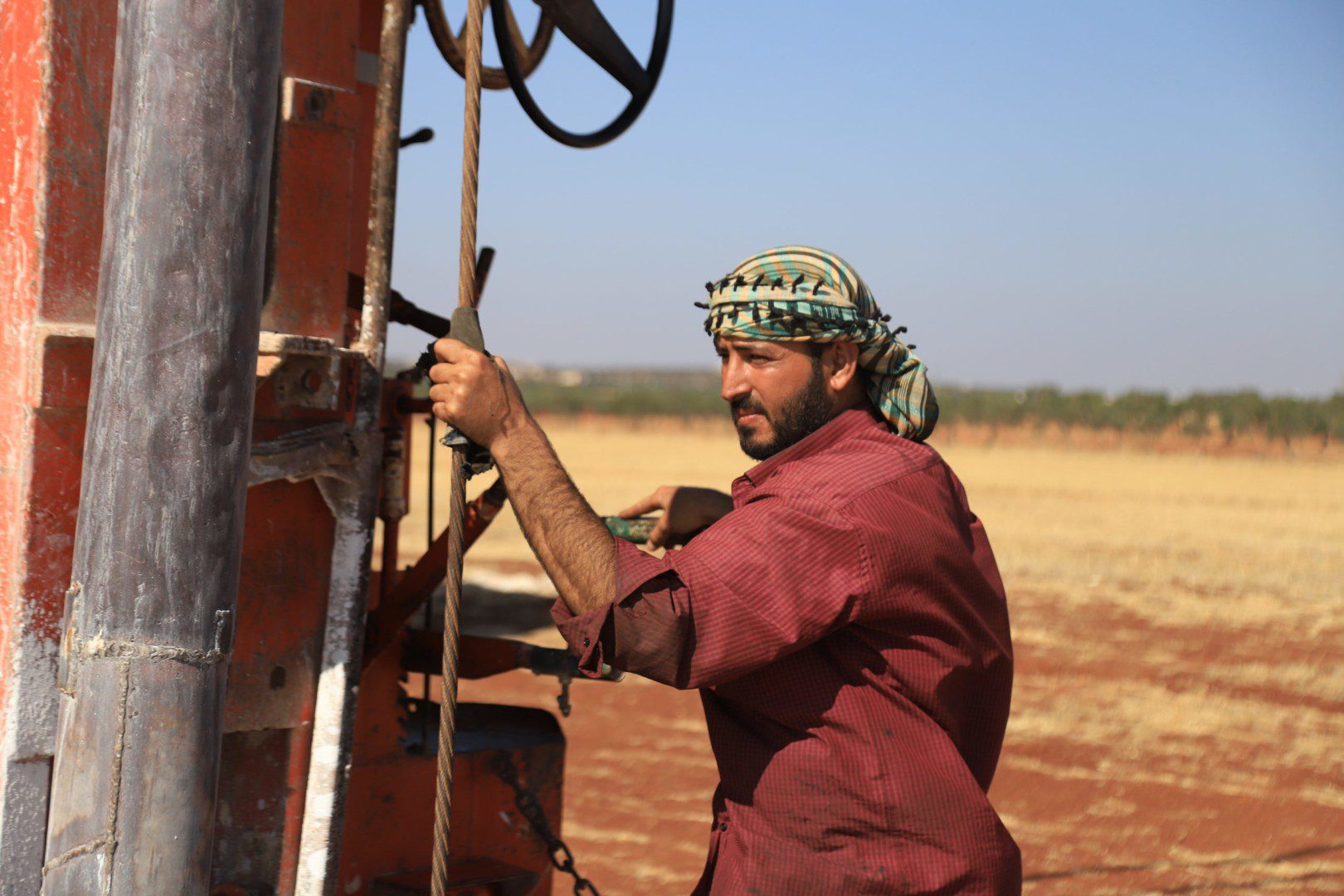
A worker operates a well drill near Maarat Misreen, Idlib, 18/08/2022 (Abd Almajed Alkarh/Syria Direct)
“The water level in underground wells rose between the fourth quarter of 2021 and the first quarter of 2022,” during the winter months when Syria receives most of its yearly rainfall, “but fell sharply between the first and second quarter,” Abdel-Khaleq al-Sheikh, who heads the Salvation Government’s Water Quality Monitoring and Water Measurements Department, told Syria Direct. Since June, “we have monitored a sharp drop in the level of some wells located in areas hosting a lot of displaced people,” al-Sheikh added.
Deeper underground water resources are also affected, according to al-Kasha. As a result, some wells are becoming unusable. The less water there is in an aquifer, the more it becomes concentrated with minerals. Overused aquifers tend to become increasingly brackish over time, to the point that the water is no longer suitable for human consumption.
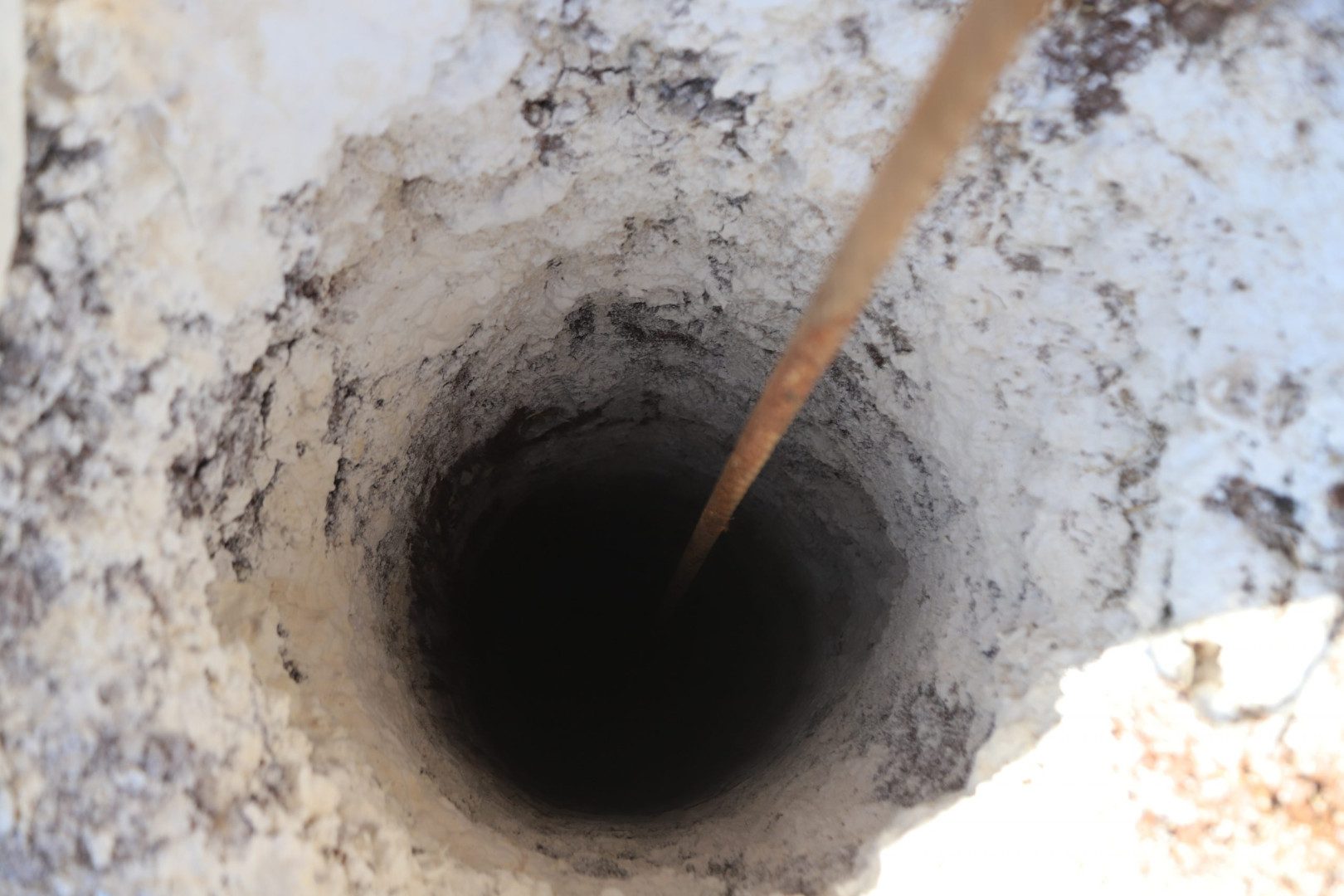
A newly drilled borehole near Maarat Misreen that reaches a depth of 300 meters, 18/08/2022 (Abd Almajed Alkarh/Syria Direct)
Shehadeh uses the water from his neighbor’s well for drinking as well as irrigation, although he is concerned about developing skin and kidney diseases due to “a high percentage of lime.”
The growing brackishness of water is not only an issue for humans. Although brackish water can be used to irrigate crops, in the long run the accumulation of minerals increases soil salinity, which is detrimental to many crops and reduces the land’s yield.
Managing water
This year the Salvation Government replaced Law 52 of 2019 that regulates well drilling in Idlib province, introducing Law 67 of 2022. Under the new law, those wishing to drill a well on their land must submit a request to the Water Resources Directorate, containing a land deed for the land on which the well is located, a survey plan and a technical statement, in addition to personal documents.
“There are penalties for drilling an unlicensed well, starting with a fine of $50 for the owner of the rig and a fine of $100 dollars for the owner of the well,” al-Yassin of the Water Directorate added. The directorate told Syria Direct it had issued more than 350 warnings and 250 fines since the start of the year.
In parallel, those who operate drilling rigs must also get a license from the Directorate of Agriculture and Irrigation. “I am licensed to work, and I do not bear any responsibility for the effects of drilling a new well,” Yassin said. “The responsibility lies with the authorities issuing the license: If they know that drilling wells in a certain area will affect the groundwater, of course they should not issue a license.” Operating an unlicensed machine is punishable by a $200 fine.
One solution to reduce pressure on underground water, according to geologist al-Kasha, is to increase the reliance on surface water by building irrigation dams and drawing more water from the nearby Orontes and Euphrates Rivers. Muhammad Nima Amhan, the Director of Water Control at the Salvation Government Ministry of Water Resources, shares this view. But “these solutions need significant financial support to create dams and irrigation networks,” he told Syria Direct.
In addition, this strategy would have devastating consequences downstream in northeastern Syria and Iraq, which already suffer from a drastic reduction of the flow of the Euphrates due to Turkish dams.
Thus, despite a growing awareness of their unsustainability, wells continue to multiply in the region due to weak governmental oversight and a lack of viable alternatives. If current practices continue, Shehadeh sighed, “the present and future generations may be deprived of the blessing of water.”

